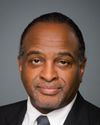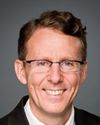That's a very good point. I'll hark back to my experience as the secretary of Canada 125.
The first thing to mention is that Canada 125 was done like a nine-alarm drill. It only started months before the actual year and, as a result, we were playing catch-up ball virtually from the get-go. It had a limitation on infrastructure. It started with somebody within government and, during the course of that year, it transitioned away from that person to Bill Pratt, who had been the project manager for the Olympics in Calgary, as well as for Heritage Park in Calgary. Ultimately, Bill was brought in because they needed a project manager.
So a good chunk of the time was spent playing catch-up. The first thing I would commend to you is that what you're doing today is a huge step forward in terms of actually having a plan, as opposed to being in a reactive mode all the way down the field.
The second thing is that—when I look back again at the success of the events—there were well-attended events, but they were there and then they were gone. They had no residue. It was like a flash grenade: there was a little bit of ash and that was it. There was a bright light, a lot of noise, and it was done.
Consistently what we found was that anything that had a local impetus to it was a good expenditure. Wanuskewin is a good example of a site that is still running today for children to go and see. That was a good expenditure. The Trans Canada Trail, as far as I'm concerned, was a fantastic expenditure.
I think if we look to capturing the imagination of people, then I think.... In fact, one of my strongest beliefs is that what the Trans Canada Trail gives people is a sense of place, a sense of hope, a sense of community, and a sense of the future. Those are parts of the reason why it has endured. The reality is that it's a place where people go every day. I ride the trail every day; it's part of my life.
That's what we want to do and I think that's actually the impetus behind making Canada 150 successful: to create something that will continue to give to Canadians every day, on a go-forward basis. It will provide bridges across the country, bridges amongst communities, and bridges amongst generations. When you take your grandchild out for a walk on the trail, that memory will last a lifetime. These are gifts that will continue forever. So how to make a success out of it is to make it an icon—something that is so representative of us as a people.
I keep coming back to something, because I've heard a lot today. I grew up in a family of historians. My mother was a medieval historian who wrote 13 books, and my uncle was Mason Wade, who wrote The French Canadians. I lived immersed in history. When I look at the things I've read in my own past—such asThe Odyssey, The Iliad, the Norse legends, and the aboriginal legends...those are the types of legends that should be part of the trail. That's how we make Canada. That's how we make the trail part of our imagination and part of our identity: it becomes one of our icons. That's where I think the success comes from.






